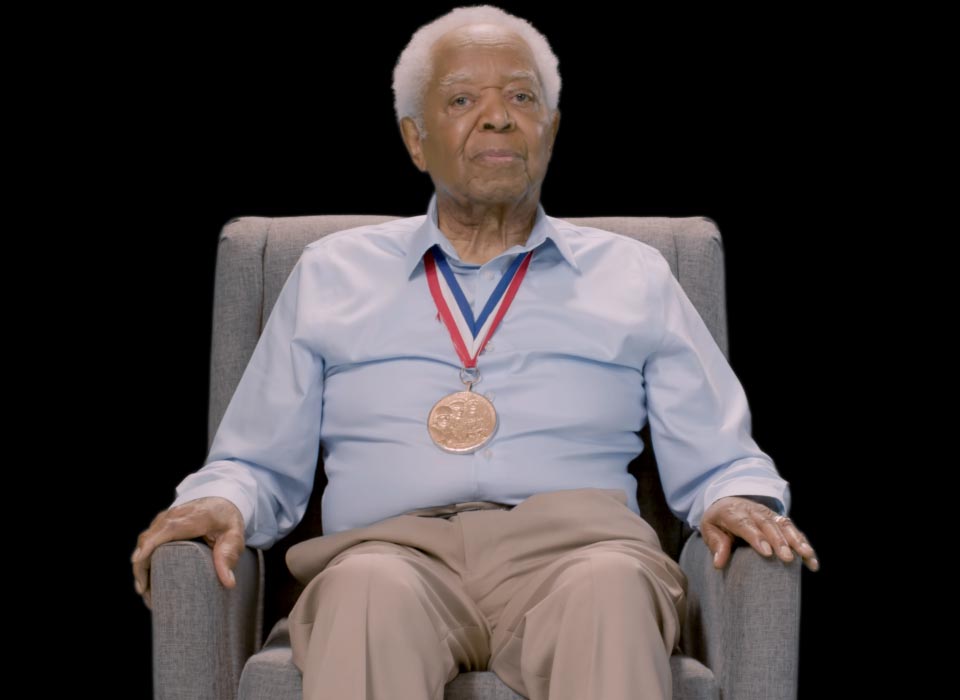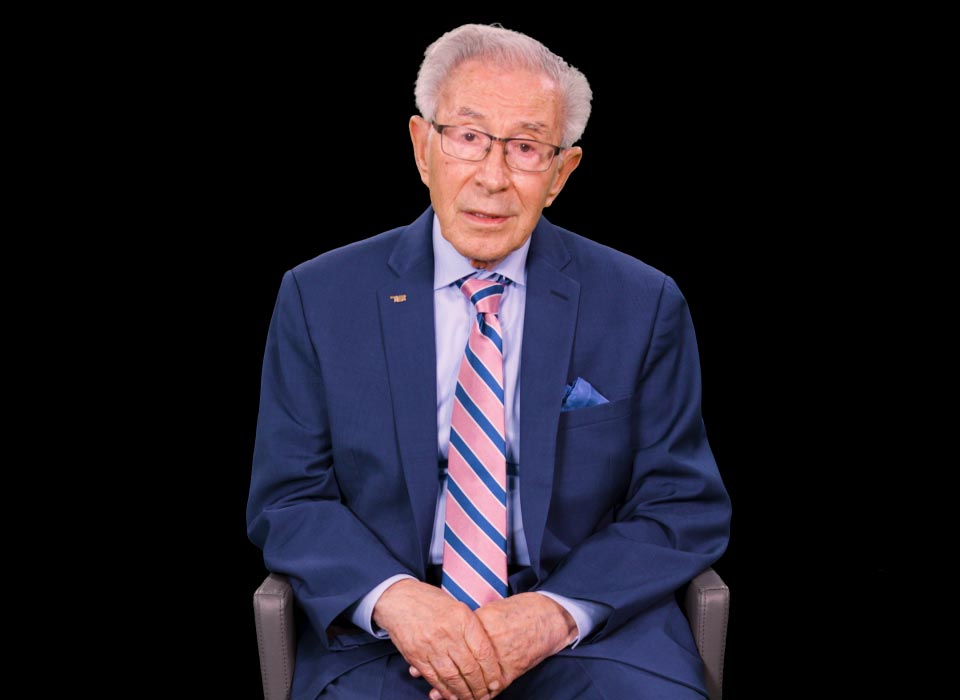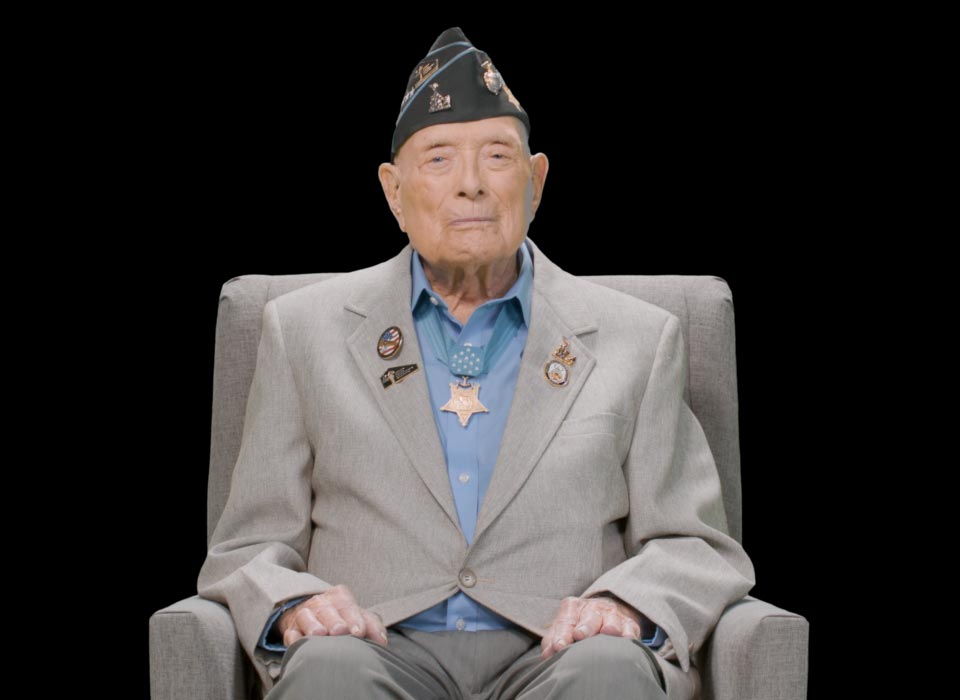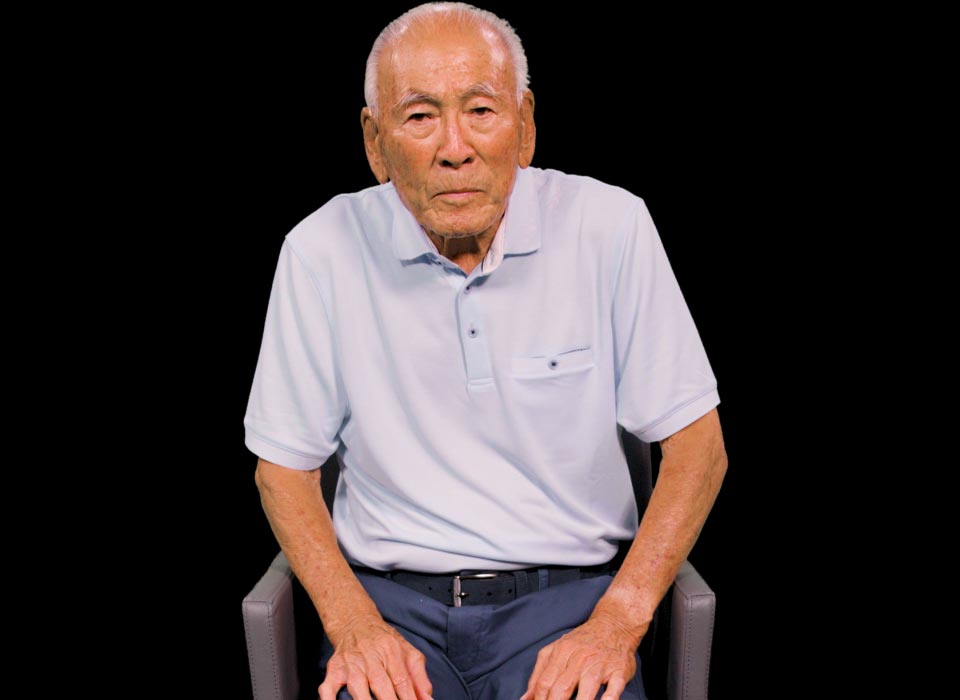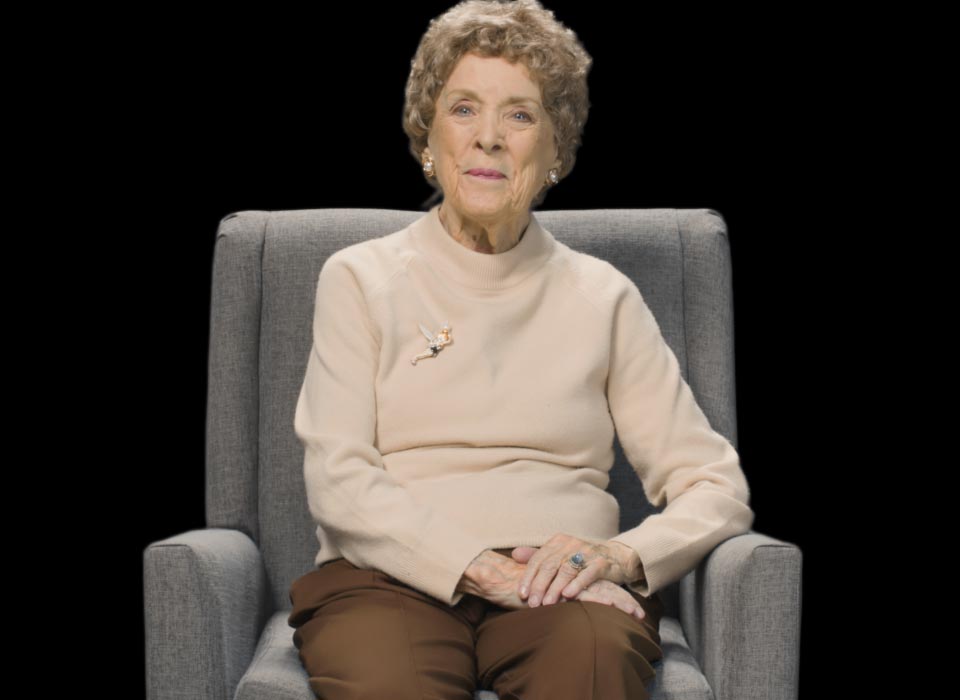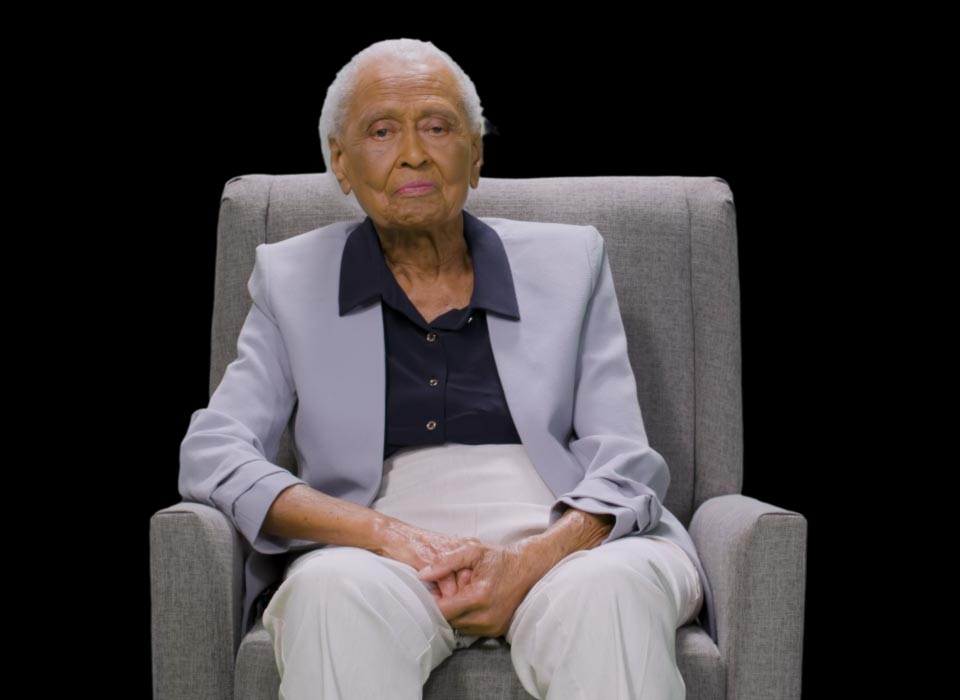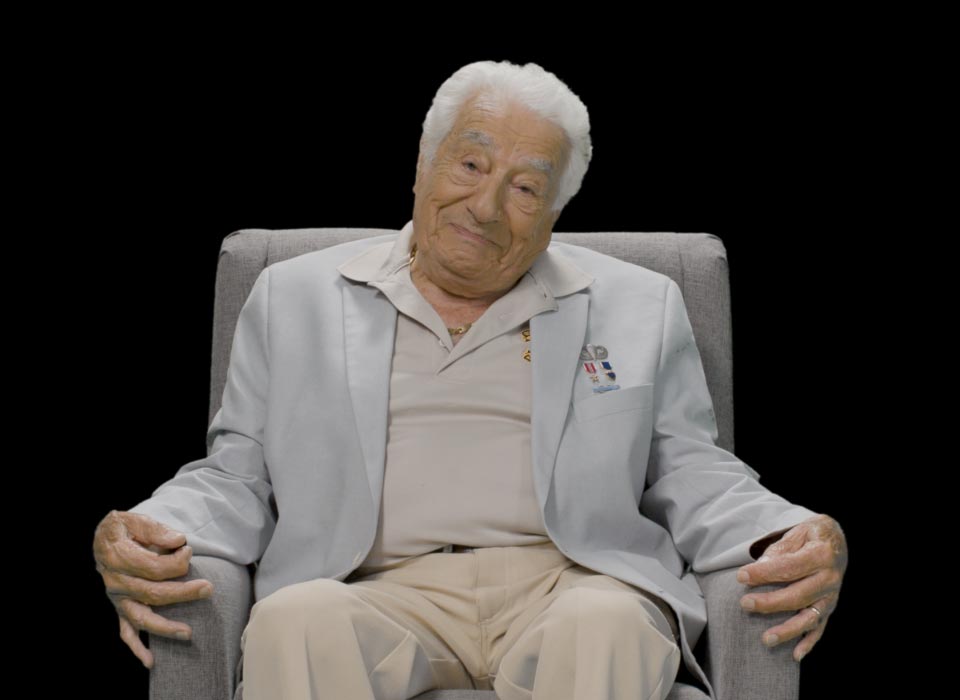May 30, 2024
The National WWII Museum tells the story of the American experience in the war that changed the world: why it was fought, how it was won, and what it means today so that all generations will understand the price of freedom and be inspired by what they learn. The museum celebrates the American spirit, teamwork, optimism, courage and sacrifices of the men and women who fought on the battlefront and served on the Home Front.
Voices from the Front is a new interactive oral history experience that will help visitors talk to the past by connecting with the WWII generation in a high-tech yet personal way. Made possible through a $1.5 million gift from Museum Trustee Sandy Villere and his wife, Margie, Voices from the Front uses cutting-edge technology and interactive video displays to allow guests to hold conversations with more than a dozen interviewees. The effect, made possible through artificial intelligence, is truly immersive as museumgoers will be able to personally engage with veterans, Home Front workers and other witnesses to the war after they are no longer with us to share their firsthand stories. Voices from the Front puts real faces to history, offering unique and intimate perspectives and bridging the gap between generations.
“Preserving the personal accounts of those who served and sacrificed in defense of our freedom during World War II is at the foundation of our mission, and having these men and women share their stories with visitors firsthand has long been a hallmark of the museum experience. Now, Voices from the Front will take this storytelling to a new level, allowing guests to continue to have their own conversations, through the power of artificial intelligence, with members of the WWII generation even long after they have passed,” said Stephen Watson, President and CEO of The National WWII Museum. “This powerful addition to the museum will give visitors the ability to authentically connect with these individuals, creating an effective way to carry on their memories of the sights, sounds, terrors and triumphs of the war for generations to come.”
Produced by StoryFile, a leader in immersive technology and video capture, each interview includes as many as 1,000 questions about the subject’s life and wartime experience, creating a robust repository of responses for the software to match to verbal questions from visitors. The Museum’s team selected individuals to demonstrate the most diverse range of experiences possible in World War II. To integrate the interactive interviews into a user-friendly interface, the Museum turned to Ideum, an experience design firm that has collaborated on past exhibits. Combining industry-leading technology with a visitor-centric approach, their Creative Services team designed an intuitive display that will help users understand Voices from the Front, differentiate among interviewees, and become comfortable with initiating conversations.
“There are no greater heroes than the men and women who risked their lives to overthrow the tyranny of the Axis powers,” said Stephen Smith, Co-Founder and CEO of StoryFile. “Through their StoryFiles, we hear blow by blow, day by day, everything they did to secure the future of the free world, a world we should never take for granted. As this great generation of heroes leaves us, it is our honor to document their stories and connect us all to a past we must never forget.”
Vincent Speranza, who served as a paratrooper during the Battle of the Bulge, died last year at age 98. But visitors to the National WWII Museum in New Orleans can still talk to him, and thanks to voice recognition software and artificial intelligence, hear answers to their questions about his experiences during and after the war. There was a race against time to preserve the stories of the men and women who fought in the war effort, and we have the technology to "speak" to future generations. By posing questions, answers from interviews conducted with Speranza and other veterans can be played, preserving not just the stories of World War II, but also the people who lived them. Eighteen veterans of the war effort each sat for two days of interviews in a specially-configured Hollywood studio.
Our great-grandchildren will be able ask Woody Williams about seeing the American flag raised on Iwo Jima on Mount Suribachi. Until his passing in 2022, Williams was the war's last living recipient of the Medal of Honor. "I received the Medal of Honor for eliminating the enemy within seven pill boxes on Iwo Jima," he said in his interview.
Corbett Summers, whose father served in World War II, was one of the first members of the public to see the new exhibit. He was overwhelmed. "Everyone should have that opportunity to see that generation," he said. "I could stand there all day and talk to each and every one of them and listen to their stories and what they went through."
“Bloody Hundredth” bomber pilot John “Lucky” Luckadoo spoke to the importance of preserving the veterans' eyewitness accounts. "Lives had been expended to protect our freedom and our values and what we considered our ideals and democracy. The biggest thing people don't understand is how the civilian population, those who were not in uniform and particularly women, rallied behind the war effort. We were unified like we have never been before, and sadly probably never will again."
For more information on TripAdvisor’s #1 New Orleans attraction that gets over 600,000 visitors annually, call 877-813-3329 or visit nationalww2museum.org.
Voices from the Front is a new interactive oral history experience that will help visitors talk to the past by connecting with the WWII generation in a high-tech yet personal way. Made possible through a $1.5 million gift from Museum Trustee Sandy Villere and his wife, Margie, Voices from the Front uses cutting-edge technology and interactive video displays to allow guests to hold conversations with more than a dozen interviewees. The effect, made possible through artificial intelligence, is truly immersive as museumgoers will be able to personally engage with veterans, Home Front workers and other witnesses to the war after they are no longer with us to share their firsthand stories. Voices from the Front puts real faces to history, offering unique and intimate perspectives and bridging the gap between generations.
“Preserving the personal accounts of those who served and sacrificed in defense of our freedom during World War II is at the foundation of our mission, and having these men and women share their stories with visitors firsthand has long been a hallmark of the museum experience. Now, Voices from the Front will take this storytelling to a new level, allowing guests to continue to have their own conversations, through the power of artificial intelligence, with members of the WWII generation even long after they have passed,” said Stephen Watson, President and CEO of The National WWII Museum. “This powerful addition to the museum will give visitors the ability to authentically connect with these individuals, creating an effective way to carry on their memories of the sights, sounds, terrors and triumphs of the war for generations to come.”
Produced by StoryFile, a leader in immersive technology and video capture, each interview includes as many as 1,000 questions about the subject’s life and wartime experience, creating a robust repository of responses for the software to match to verbal questions from visitors. The Museum’s team selected individuals to demonstrate the most diverse range of experiences possible in World War II. To integrate the interactive interviews into a user-friendly interface, the Museum turned to Ideum, an experience design firm that has collaborated on past exhibits. Combining industry-leading technology with a visitor-centric approach, their Creative Services team designed an intuitive display that will help users understand Voices from the Front, differentiate among interviewees, and become comfortable with initiating conversations.
“There are no greater heroes than the men and women who risked their lives to overthrow the tyranny of the Axis powers,” said Stephen Smith, Co-Founder and CEO of StoryFile. “Through their StoryFiles, we hear blow by blow, day by day, everything they did to secure the future of the free world, a world we should never take for granted. As this great generation of heroes leaves us, it is our honor to document their stories and connect us all to a past we must never forget.”
Vincent Speranza, who served as a paratrooper during the Battle of the Bulge, died last year at age 98. But visitors to the National WWII Museum in New Orleans can still talk to him, and thanks to voice recognition software and artificial intelligence, hear answers to their questions about his experiences during and after the war. There was a race against time to preserve the stories of the men and women who fought in the war effort, and we have the technology to "speak" to future generations. By posing questions, answers from interviews conducted with Speranza and other veterans can be played, preserving not just the stories of World War II, but also the people who lived them. Eighteen veterans of the war effort each sat for two days of interviews in a specially-configured Hollywood studio.
Our great-grandchildren will be able ask Woody Williams about seeing the American flag raised on Iwo Jima on Mount Suribachi. Until his passing in 2022, Williams was the war's last living recipient of the Medal of Honor. "I received the Medal of Honor for eliminating the enemy within seven pill boxes on Iwo Jima," he said in his interview.
Corbett Summers, whose father served in World War II, was one of the first members of the public to see the new exhibit. He was overwhelmed. "Everyone should have that opportunity to see that generation," he said. "I could stand there all day and talk to each and every one of them and listen to their stories and what they went through."
“Bloody Hundredth” bomber pilot John “Lucky” Luckadoo spoke to the importance of preserving the veterans' eyewitness accounts. "Lives had been expended to protect our freedom and our values and what we considered our ideals and democracy. The biggest thing people don't understand is how the civilian population, those who were not in uniform and particularly women, rallied behind the war effort. We were unified like we have never been before, and sadly probably never will again."
For more information on TripAdvisor’s #1 New Orleans attraction that gets over 600,000 visitors annually, call 877-813-3329 or visit nationalww2museum.org.

